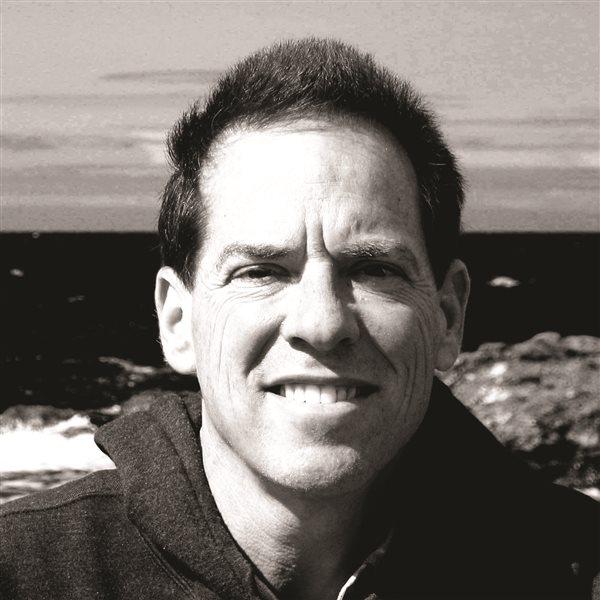Kindred spirits in Navajoland
I could scarcely believe my good fortune. Chaco Canyon ranks among the most significant archaeological sites in the Southwest. Encompassing hundreds of ruins in remote northwest New Mexico, the vast complex had been on our wish list for at least 15 years. And to explore an unpublicized ruin under the guidance of a pro -- wow! Instantly, I accepted.
Window Rock, Arizona, is capital of the Navajo Nation and gateway to the scenic Four Corners region of Colorado, New Mexico, Arizona, and Utah. Along with photographing the area by ultralight aircraft for books and magazines, Adriel flies King Airs for the Navajo Nation. His wife, Holly, is a nurse-midwife at Fort Defiance Indian Hospital.
"No wonder they love this country," Jean and I agreed as we approached for landing. The tortured terrain, purity of sky, and velvety high-elevation sunshine create a luminous landscape like nowhere else. After stowing the Flying Carpet and visiting the arch for which Window Rock is named, Jean and I joined the Heisey gathering. There, we mingled with Navajo guests and expatriate teachers, engineers, and health-care professionals from around the country.
The next morning dawned with a fantasy flight to Crownpoint, New Mexico, northeast of Gallup. For 20 unforgettable minutes, our windows brimmed with golden backbones of mountains, crimson spires, eight-sided Navajo hogans, and amorphous mud sweat lodges. Never did the Flying Carpet seem so aptly named as when we challenged vermillion cliffs on landing at isolated Crownpoint Airport. We were securing the airplane when Adriel arrived in his truck.
Adriel's archaeologist friend missed our planned trading post rendezvous, so we tracked him down at a nearby mission. At first impression, Tom Windes seemed a somber man, masked by full-coverage sunglasses, a fishing hat, and a bushy mustache. But his scarlet shirt and yellow bandana suggested adventure beneath the surface. Joining Tom was his missionary host, Bob, attired in a Sancho Panza hat. All five of us squeezed into Adriel's truck.
"Not a word to anyone about where this place is located," Tom cautioned upon learning that I am a writer. "If only we could educate every visitor not to pick things up." He needn't have worried. After driving miles of dirt roads, making countless turns at unmarked tracks, bumping over rutted pastures and doubling back repeatedly, I couldn't have revealed the location if my life depended on it. We stopped at a Navajo homestead for permission to access our destination site, waiting in our truck by time-honored tradition. No one emerged to greet us, so we left a note, then forged through dozens more turns and reversals.
Dodging fantastical hoodoos, or stone columns, Adriel showed where he'd befriended a Navajo boy during a photo shoot. After taking the child for a flight in his ultralight, the photographer was rewarded with a tour of a secret butte-top ruin. "Must be late Mesa Verdean, based on the precarious location," observed Tom. "They always built in inaccessible places."
By now, Jean and I ached from jolting over holes and ruts. To our relief, Tom signaled that we stop and get out. "See that dark vegetation?" he said, pointing to a distant hill. "It's tansey mustard. Plant variations often mark archaeological sites and sometimes suggest what's buried there. We're looking at a thousand-year-old trash heap." Tom estimated the huge midden to be 30 feet deep, encompassing millions of artifacts. The archaeologist charged ahead of us up the hill like a scientific Pied Piper, his animation and enthusiasm increasing with every step.
Trekking behind the others, Jean and I wondered if we'd encounter ancient pottery among the endless vistas and wildflowers. Then she spotted an exquisitely painted potshard. Soon the ground was carpeted with them, and the air became dense with ancient spirits. "That intricate black-and-white pottery is the native equivalent of fancy china," Tom explained. "The unpainted shards are from everyday ware, and the red pottery originated elsewhere." He noted that additional undiscovered sites might line this particular axis from Chaco Canyon. "Such patterns are best identified by air," added Adriel. Intrigued, I volunteered the Flying Carpet for future scouting efforts.
Today's mission tested Tom's theory that ornamental jewelry was manufactured at this site. For hours the five of us battled sun and wind in pursuit of sandstone tools and hand-worked "red dog shale," a ginger-hued stone. Tom flagged each artifact where it was found so it could be replaced after photography. The fruit of our labor was a single photograph documenting 12 tiny objects, and a handful of notes. "An outstanding day!" beamed Tom as we hiked to the truck.
Back we bumped along serpentine trails. After a brief tour of Kin Bineola ruins, we dropped Tom and Bob at the mission and returned to Crownpoint. There our lonely Flying Carpet soaked up sinking sun on an empty airport in an empty landscape. Jean and I embraced Adriel goodbye, then rolled down the runway.
"Look!" she said as we turned downwind toward home. Alongside the runway, Adriel gazed cross-legged from the hood of his truck. In the crystalline air, his silhouette remained visible until we crossed the ridge toward Gallup. Squeezing hands after such a fulfilling day, Jean and I imagined the perspective of our fast-disappearing friend -- watching kindred souls soar from the land of the ancients into a blood-red sunset.
Greg Brown was the 2000 National Flight Instructor of the Year. His books include Flying Carpet, The Savvy Flight Instructor, The Turbine Pilot's Flight Manual, Job Hunting for Pilots, and You Can Fly! Visit his Web site.

